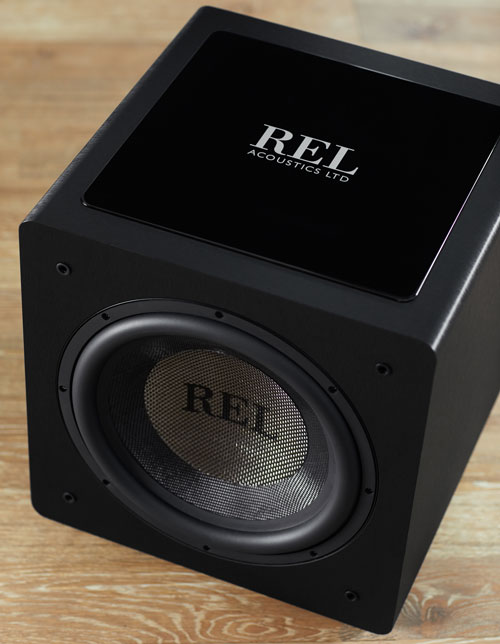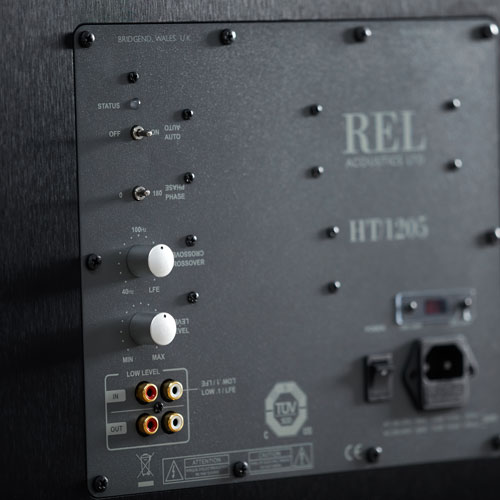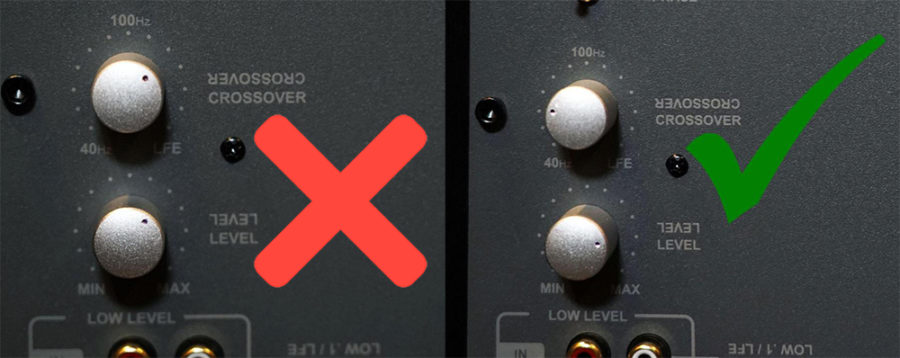Blog
Getting the Most out of Your HT
Tips from the World's Pickiest Setup Artists
Congrats! You just received your new REL HT subwoofer, opened it up, read the QuickStart guide and have it up and running. And it sounds great, it’s hard to get one of these to not deliver big bass and with big bass comes big fun.

But are you getting everything you paid for? Read on if you want to know some of the tips and tricks the audio world’s pickiest setup artists use to dial in incredible bass, bass that will deliver FAR more than the usual bumps and thumps. And understand that EVERYONE can do this, these tips are simple, straightforward and can be heard by everyone. The most important thing to do is go slowly and methodically and to trust your ears.
With your sub up and running (all 4 inputs work so you can’t get it wrong, the ones on the left (when looking at the rear panel) sound slightly better as they’re closest to the signal. Set the Level, crossover and phase switch controls to the following positions:
- Level to the 11 o’clock position as a starting point.
- Crossover to the 10 o’clock position as a starting point.
- Phase to the 0 position.
Pro-Tip: Before you start, pick up a copy of the cd soundtrack to the old 1994 movie Sneakers, available on Amazon and from others. Cut #4 remains the best REL setup cut to-date, featuring a large concert bass drum gently struck at consistent volume levels, which means you get impulse-based low bass that is consistent and this allows for adjustment of even subtle effects. In a perfectly tuned system, you’ll be able to hear what we call a “double-tap” where it’s possible to hear both skins of the drum, the initial major impulse followed a moment later by the internal pressure wave striking the opposite skin.
Here is a link to where you can purchase a copy of the Sneakers soundtrack.
Note: Play cut #4 at a moderately loud level. This will vary by person and room but a higher-than-average level of output is necessary to pressurize the room and will make judgements easier to arrive at during setup. All initial adjustments are made with you listening and adjusting at the subwoofer position.
If level is too loud/soft, carefully adjust up or down slightly.

1.Phase: This determines whether your subwoofer driver is moving outward in synchronization with the same movement by your L-R speakers’ bass drivers doing the same.
2.Once you have Sneakers cut #4 playing, switch the phase switch over to the 180 setting Ignore everything but identifying which setting results in higher output/louder. Forget any subjective ideas of one setting or another producing a subjectively “better” sound. Only answer the question; “Which direction is louder?” Do this a couple of times to make sure you aren’t being fooled by momentary perceptions of additional loudness. Whichever setting is reliably louder, stick with that. Congrats, you have set phase.
3. Crossover: This setting adjusts clockwise to increase frequency. The single biggest mistake we see most people making is that they set the crossover far too high. In many stores, we find this control set to the 3 o’clock position. Yikes! Please, turn the crossover knob all the way down (left) to the bottom stop which is at approximately 7 o’clock. Playing the Sneakers cut, gradually bring up the crossover point until it begins to simply get too fat sounding (the beginnings of bad car stereo bass). Back off until it sounds natural and you’ll find in most systems, this setting is between the 8 o’clock and 9 o’clock positions. Ironically, by setting the crossover far too high, these folks who want MORE, BIGGER bass are actually limiting how loud it will play. Instead of huge, explosive bass, they create a subwoofer that overloads and distorts the amplifier. Who wants to listen to tubby, boomy bass that distorts and sounds awful? To be fair, the uninformed salespeople in stores do this to almost every manufacturer’s subs so we’re not alone. But it can be SO much better. The final tweak is next.
4. If you’ve done step #3 properly you now have a nice sounding, well-balanced system with only one problem—and it’s a big one. While the system sounds nicely balanced, if you put on a modern special effects-driven movie the bass will be just ok, not thrilling. Now’s when you get to have fun. Because special effects bass only occurs once in a while and because your REL, now properly tuned, is blending beautifully with your main L-R speakers you now have license to turn the wick up. And I mean waaaay up.
In demo rooms in stores (which frequently suffer from flimsy drop ceilings and thus require far more boost than the average home) we find ourselves turning the volume/level control up past 2 o’clock. In most homes, that setting will blow you halfway across the room on an HT/1205 and be damned loud through an HT/1003. On an HT/1508, it’s plain silly, but good fun all around.

5. Final tweaks: For best sound on ANY subwoofer or speaker, physical placement is key. Try toeing in the sub till it points almost at the main listening position. This produces faster, clearer bass with better attack. Next try moving (slowly) the sub laterally inward and outward along the front wall. Stop and mark locations that have stronger deep bass. Then go back and make a final assessment of which is the best of the 2-3 spots you marked in a 2-3-foot distance. Try the same thing moving parallel to the side wall, move it out of the corner and along the side wall, marking locations for best sound.
This only takes 5-10 minutes but can be the difference between good and great bass. Enjoy the process of dialing in your system, trust your ears and you’ll often find that you’ve unlocked huge performance gains just by being willing to work at it a little.
Great job, with a little careful work and increased trust in your ears, you’ve accomplished what no room correction system on the market can. Your properly calibrated HT series sub should now be delivering huge dollops of incredibly powerful bass and, as importantly, be helping with dialogue richness and balance, adding correct spatial cues to scenes; everything a great theatre woofer is supposed to deliver. Thank you for being willing to work a little harder than the average customer and welcome to the REL family.










